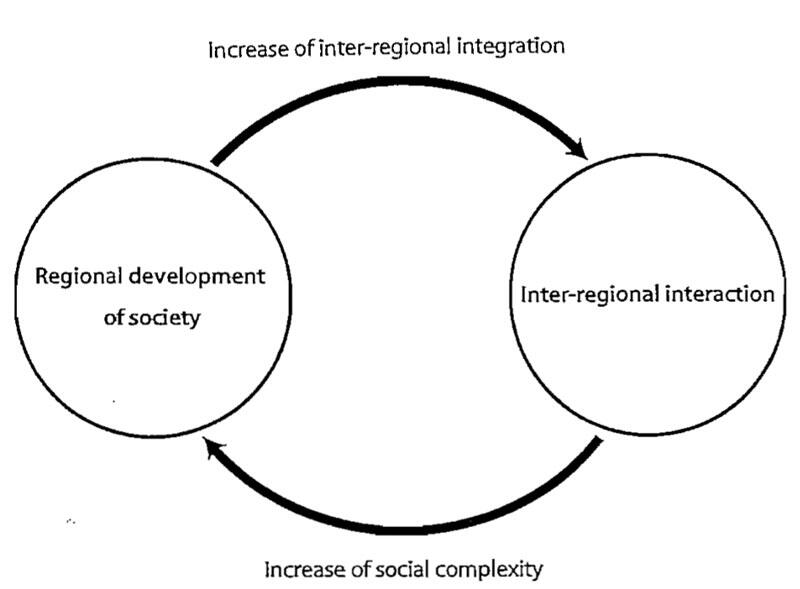"Urban society is a highly complex system in terms of its institutions, hierarchy, integration, etc." writes the author. "A vast region is incorporated into one social system which is based on cities. This is common among human societies all over the world, even if spaces and time periods differ among them. On this basis, it is naturally assumed that the process of development of an urban society is accompanied by the development of an inter-regional interaction system, which forms a foundation of the social system and socio-political structure of the urban society." In other words, cities are manifestations of complex supporting structures, movements of goods and peoples that can span wide areas; they rise and fall in the context of this supporting network. Japanese archaeologist Akinori Uesugi describes the formation of distinct cultures in and around the Indus region towards the end of the 4th millennium BCE, and traces how certain stylistic variants in seals and pottery for example made its way into the more integrated Indus civilization we know of in the following millennium. Their range was limited, but we can see how they contributed to future developments even if much remains to be understood (and excavated) with respect to these cultures. In particular it is cultures to the west (Balochistan) and north (Afghanistan and what is now Khyber Pakhtunkhwa) that offer the most material support for the author's investigations, which are an important step in situating the Indus civilization in the cultural stew that preceded and surrounded it, something that is too easy to forget when we look too closely at one culture or period. One might even say, the greater and larger a civilization, the deeper and richer its connections to societies outside and on the margins of that civilization, and if incorporated with, also different in many ways from that civilization.

